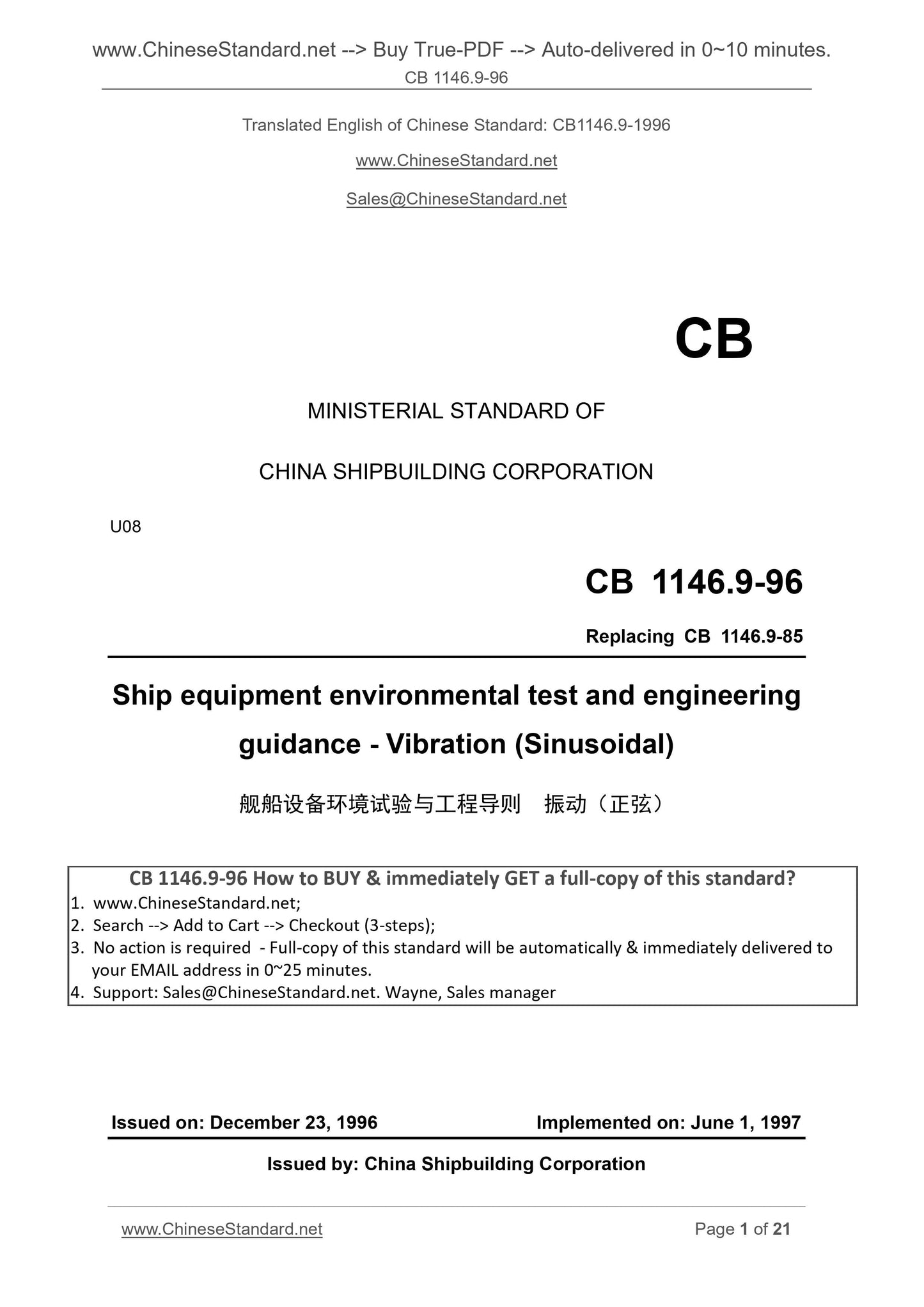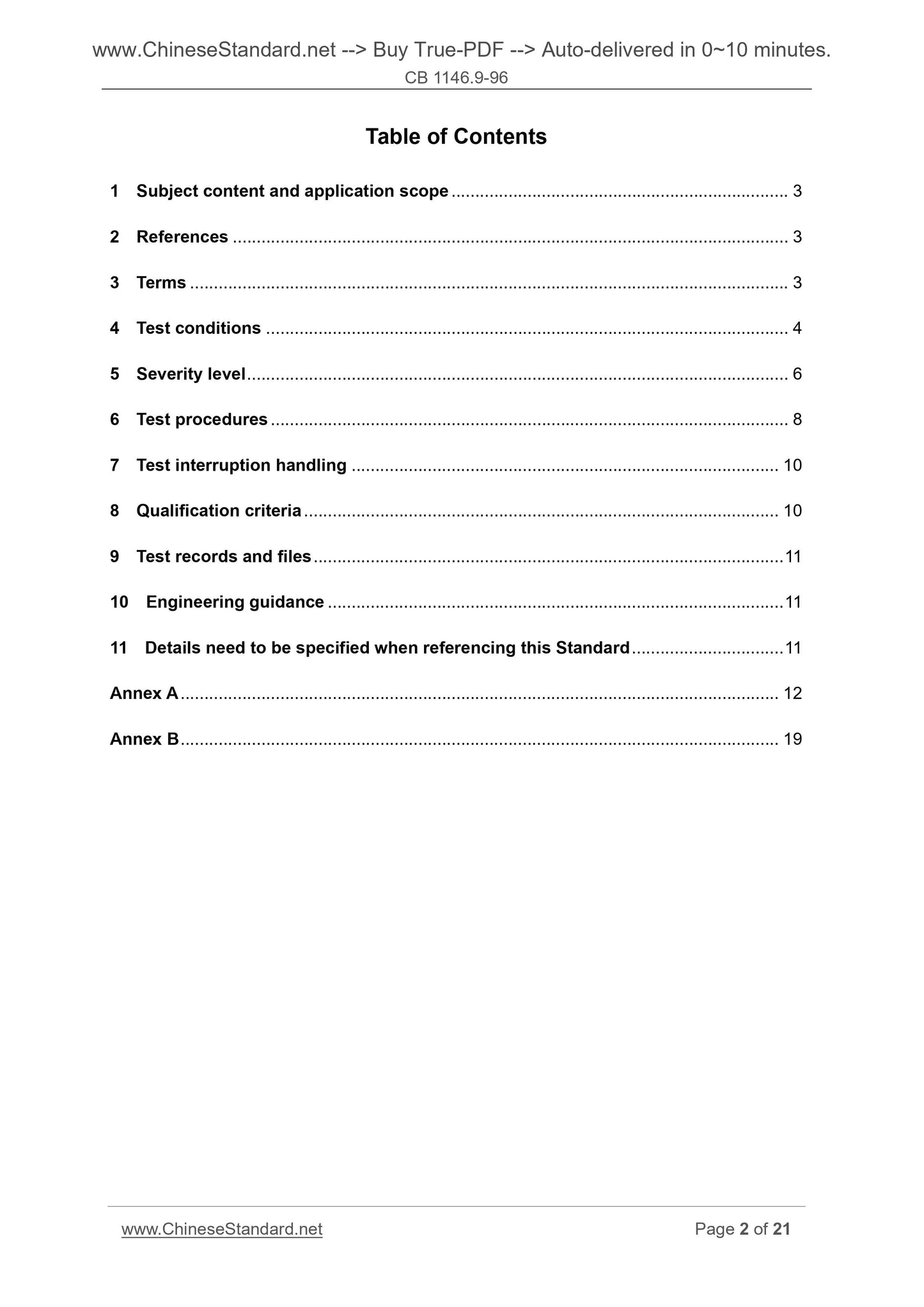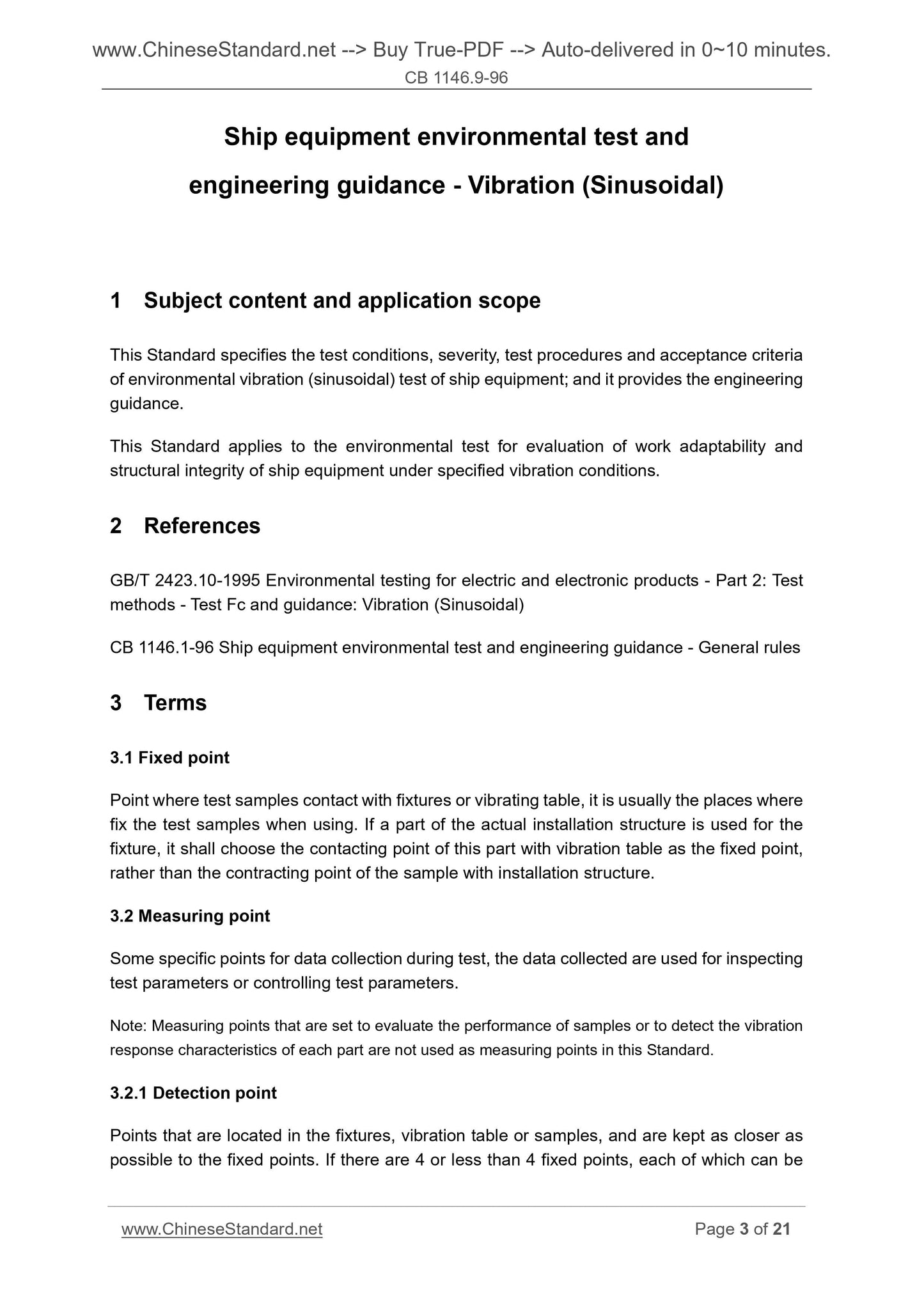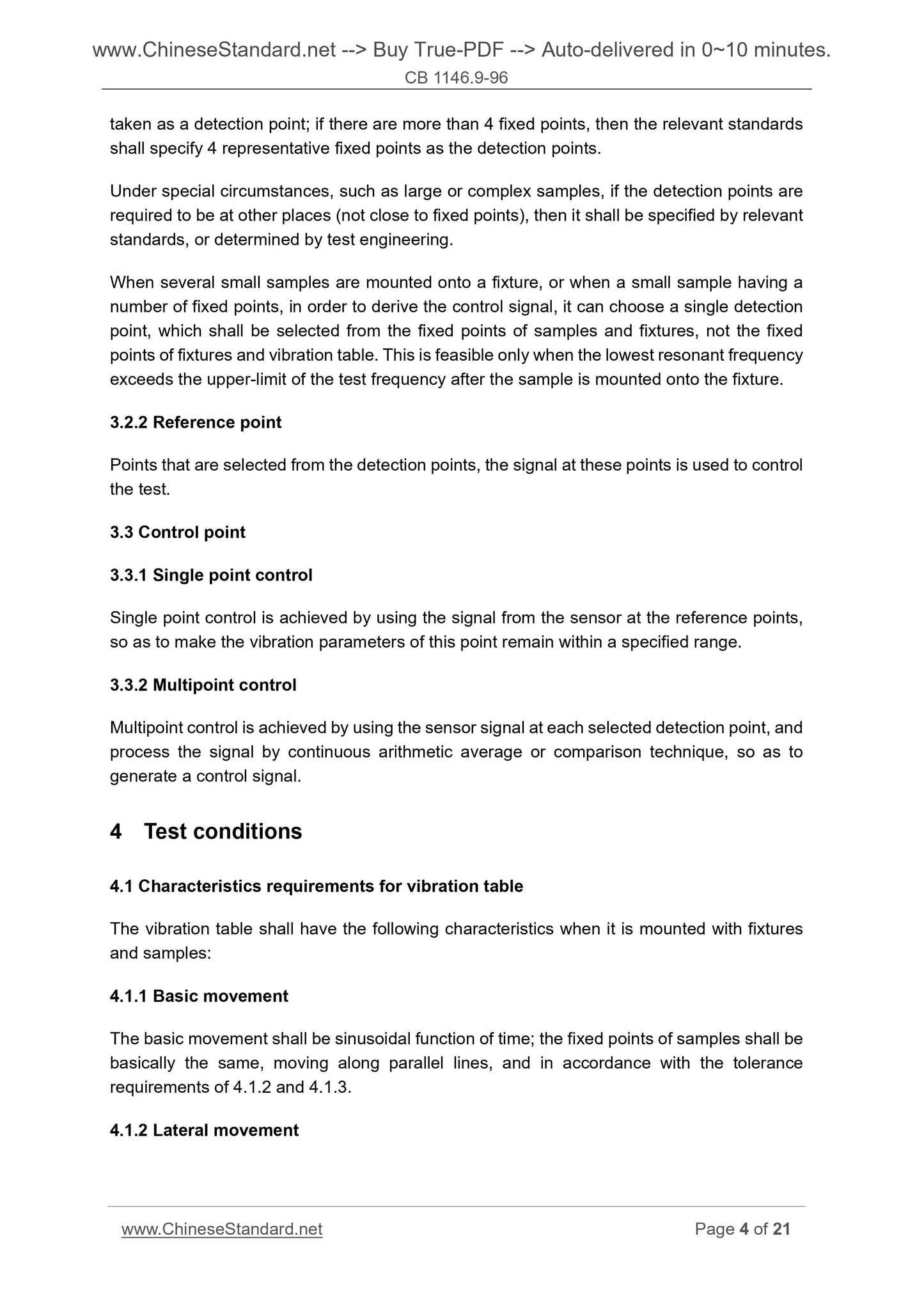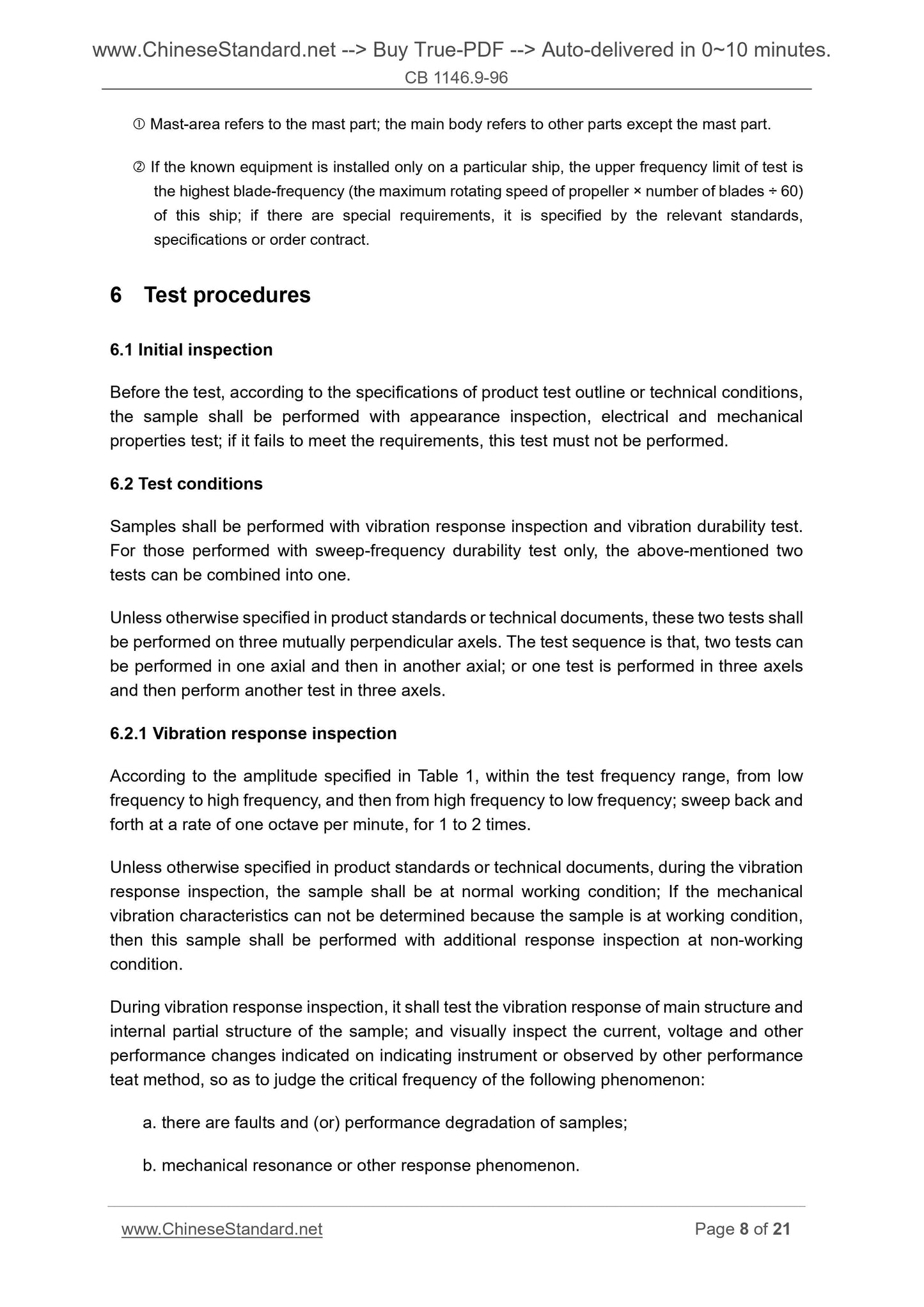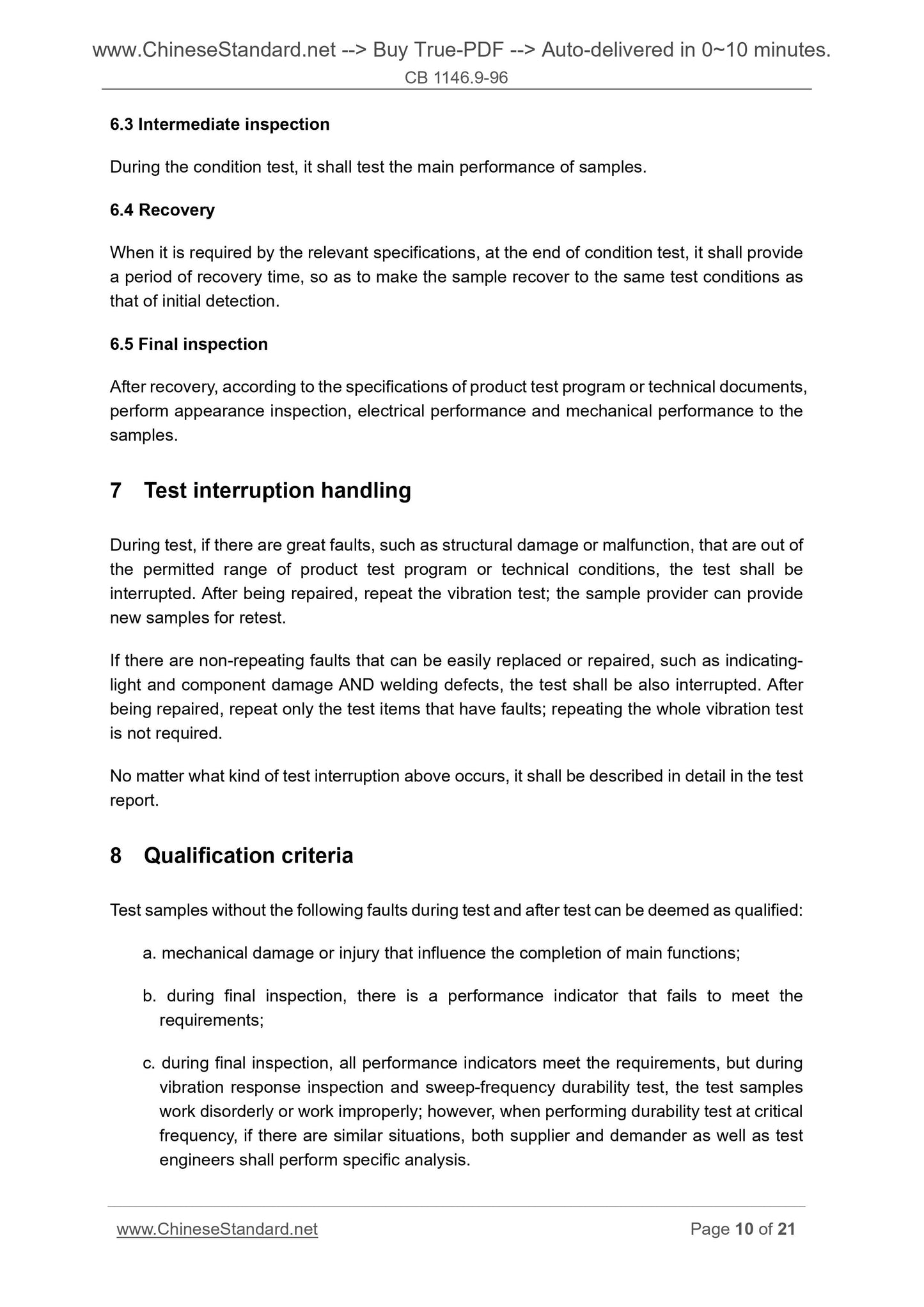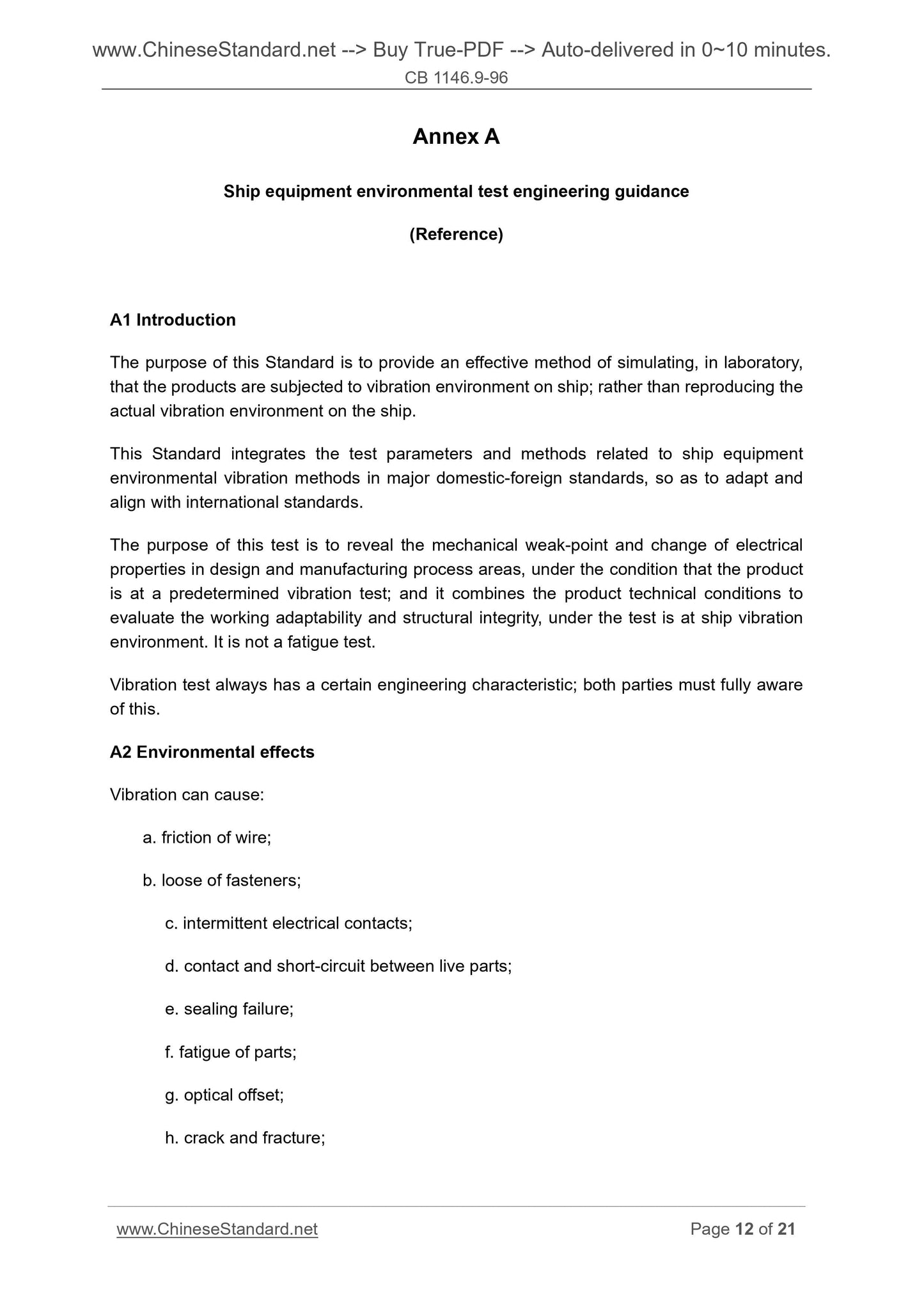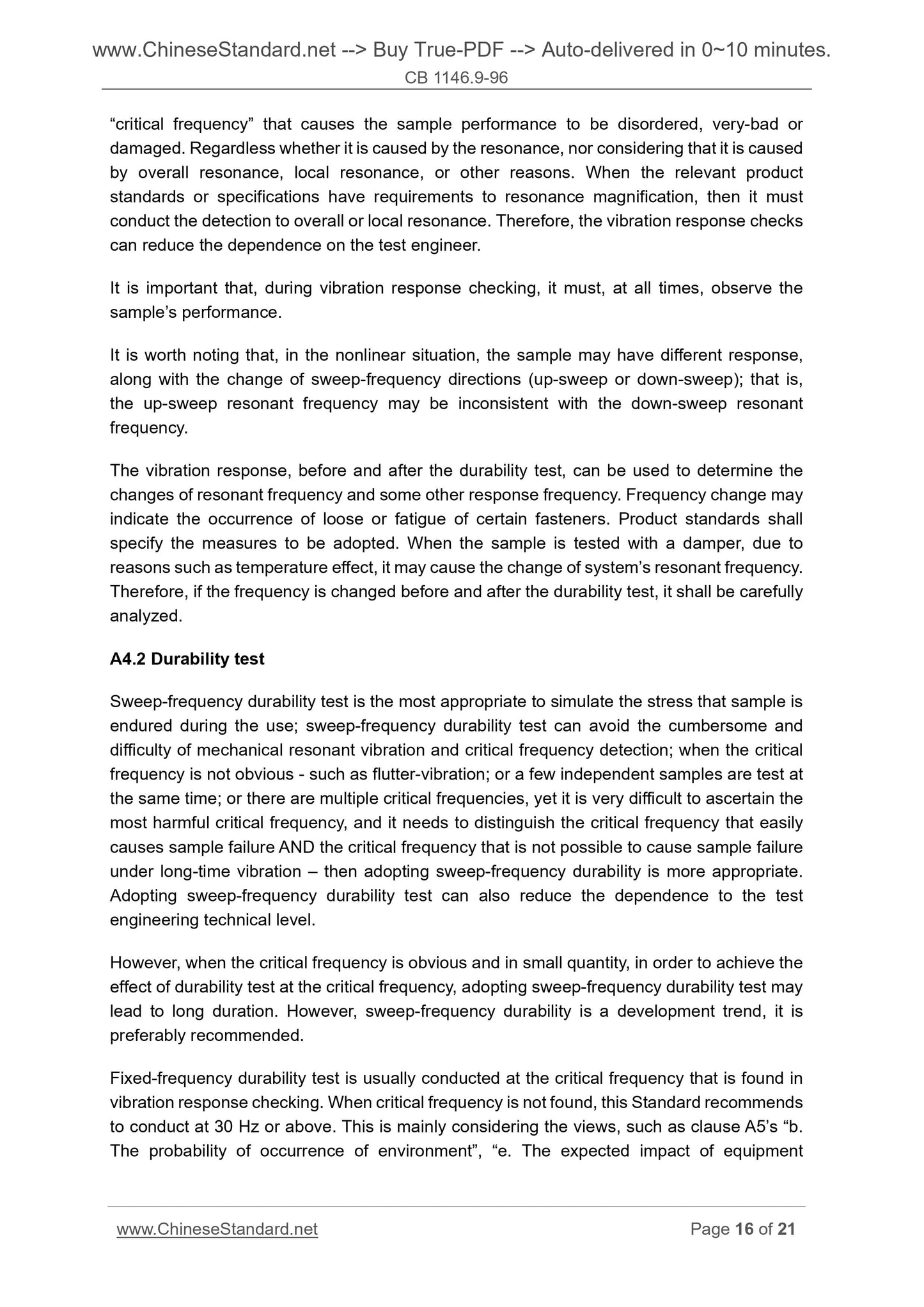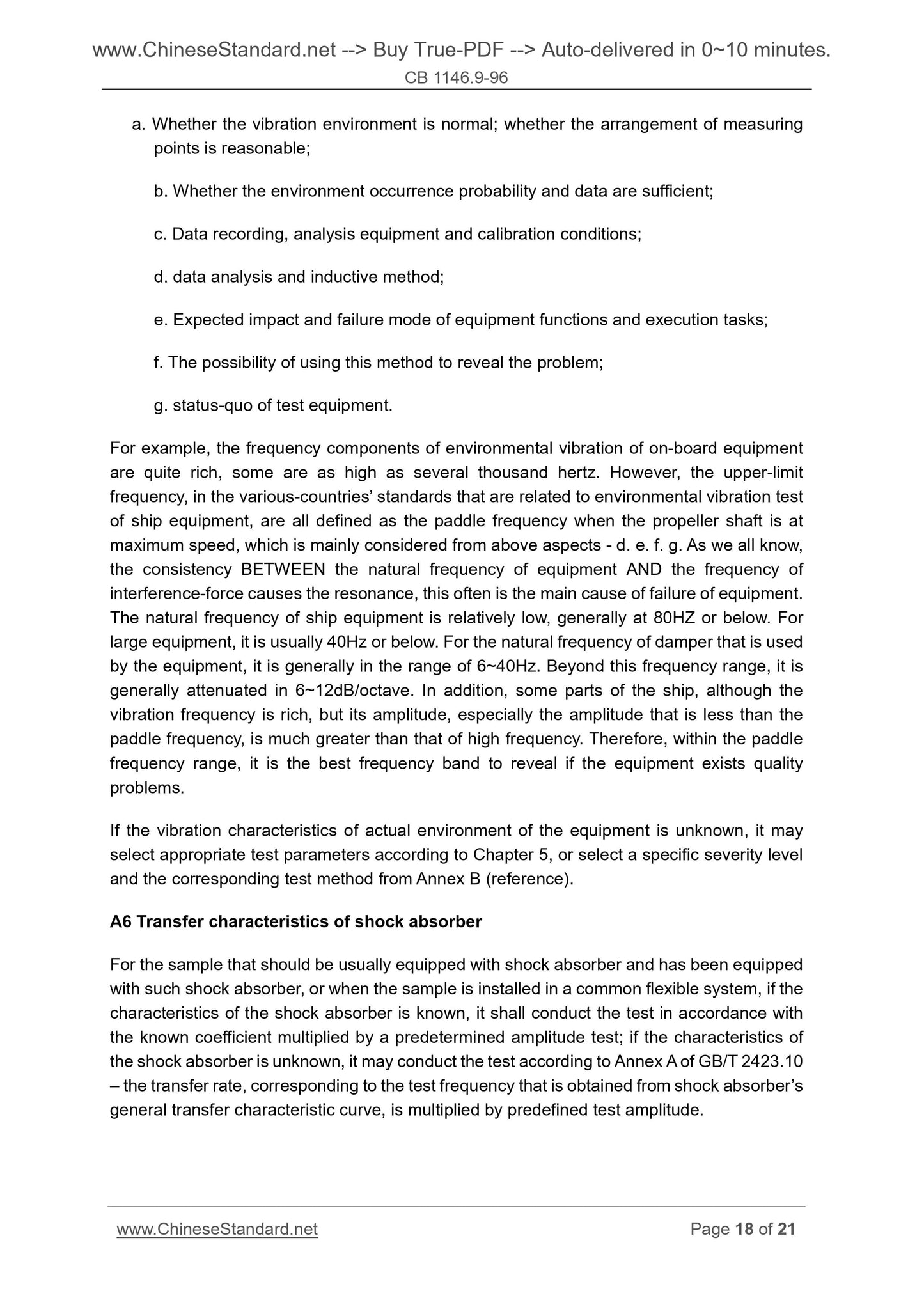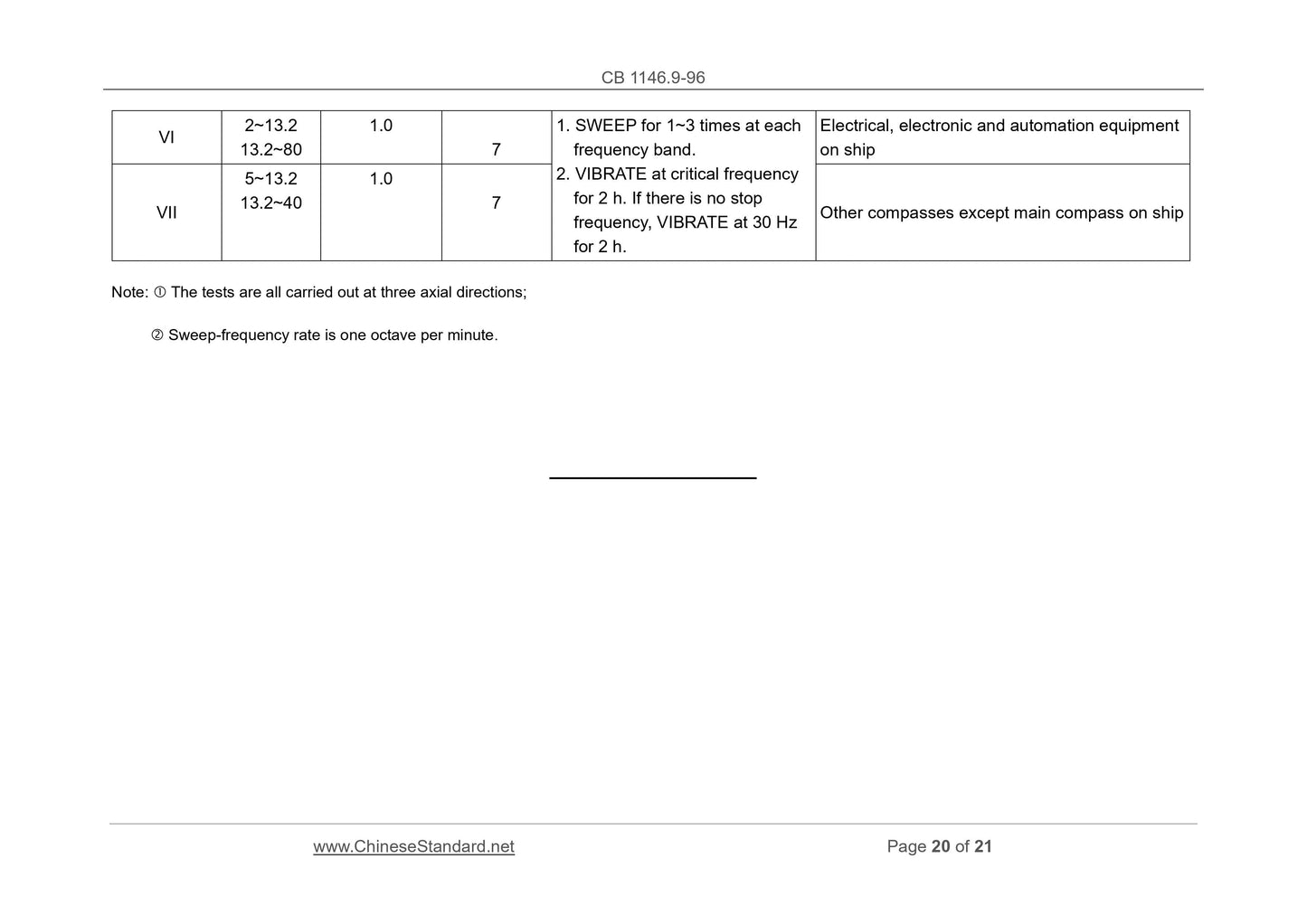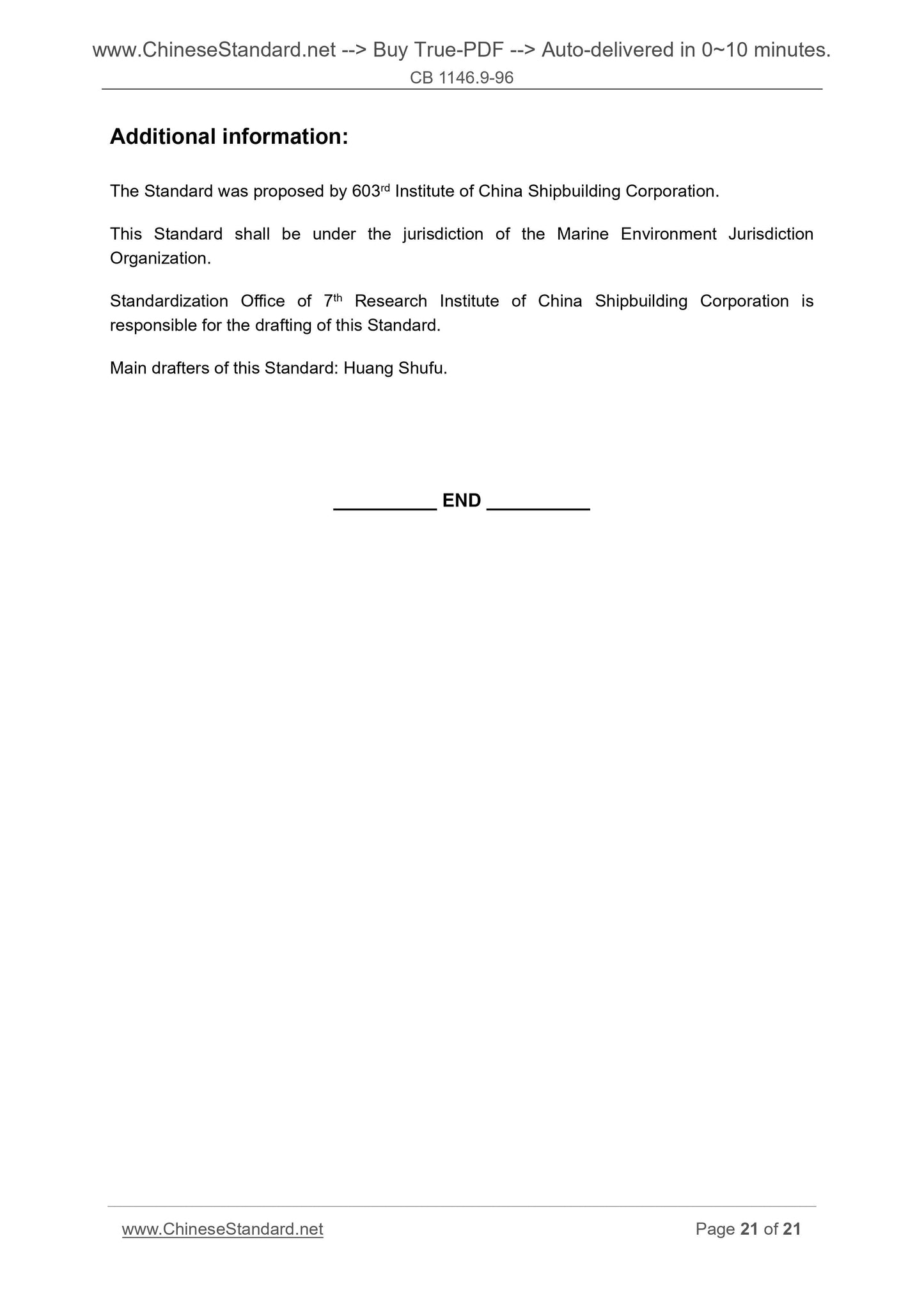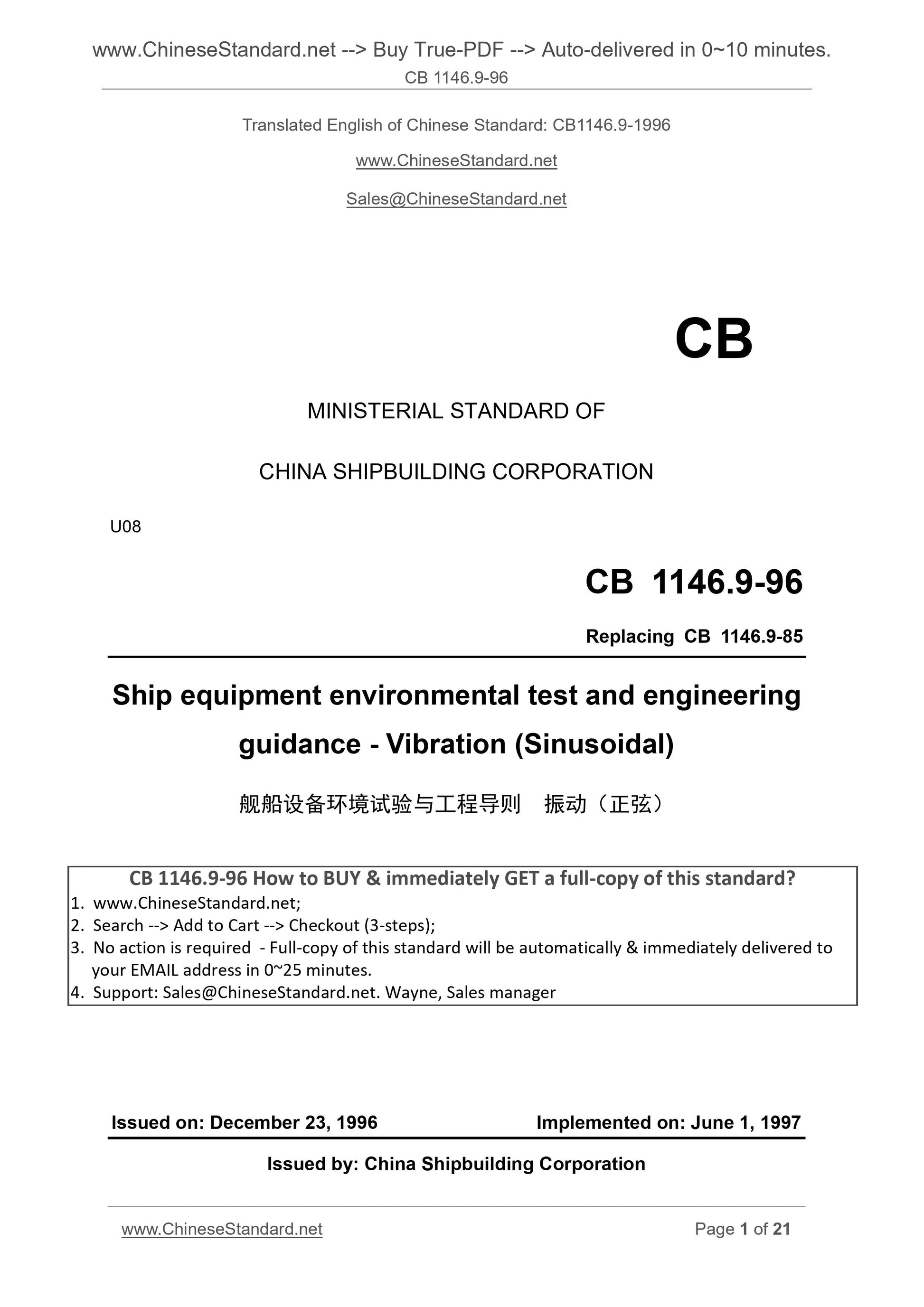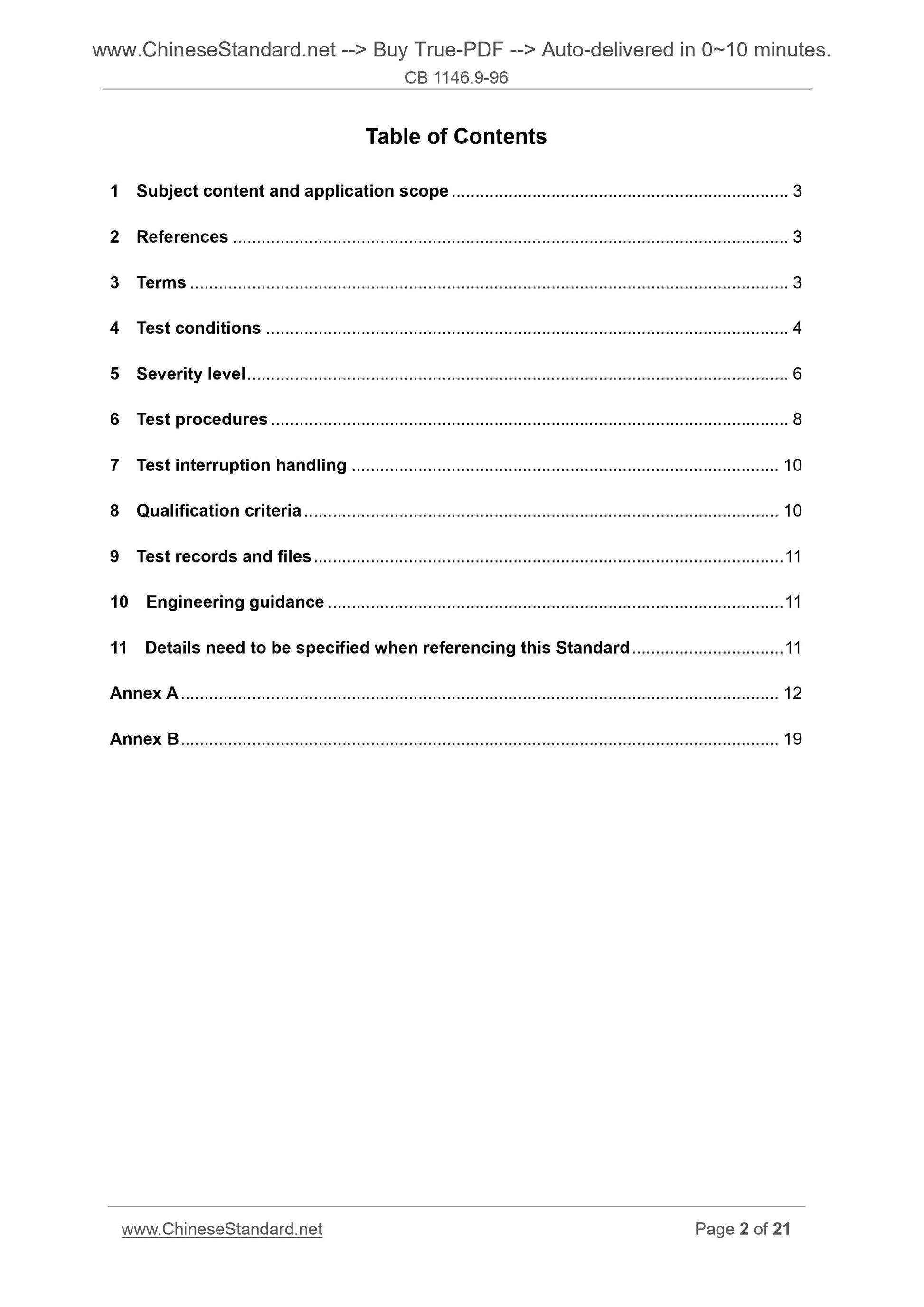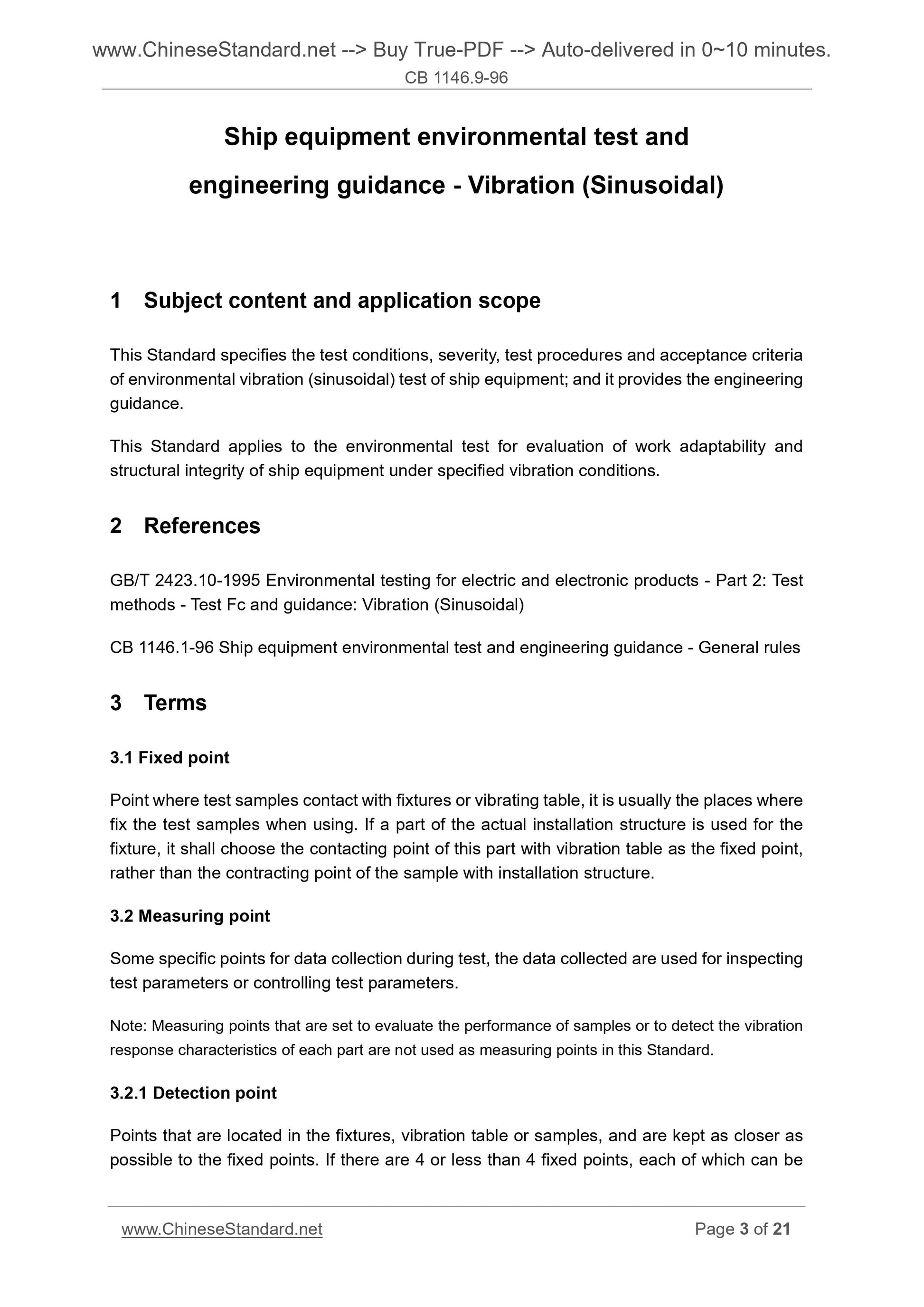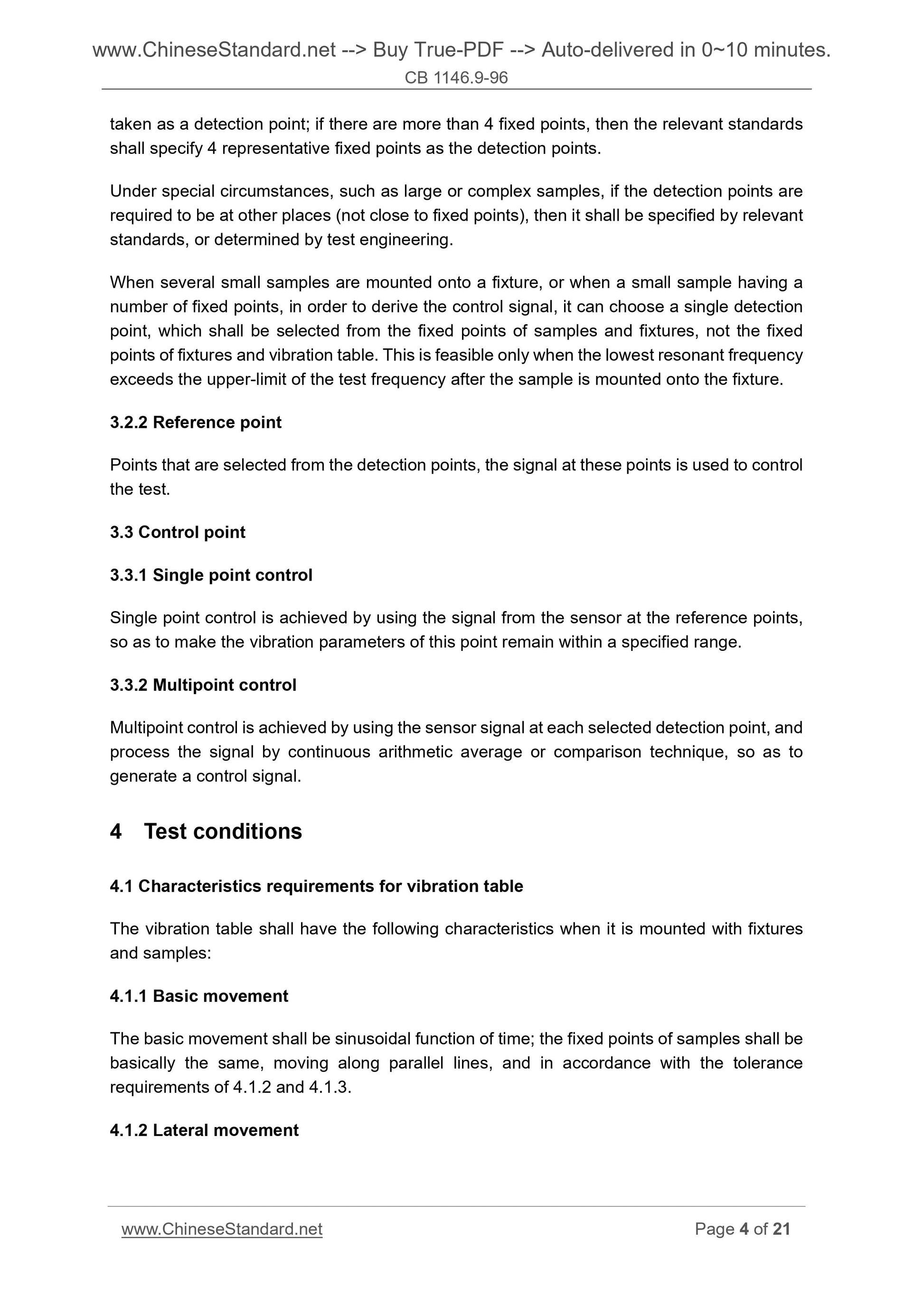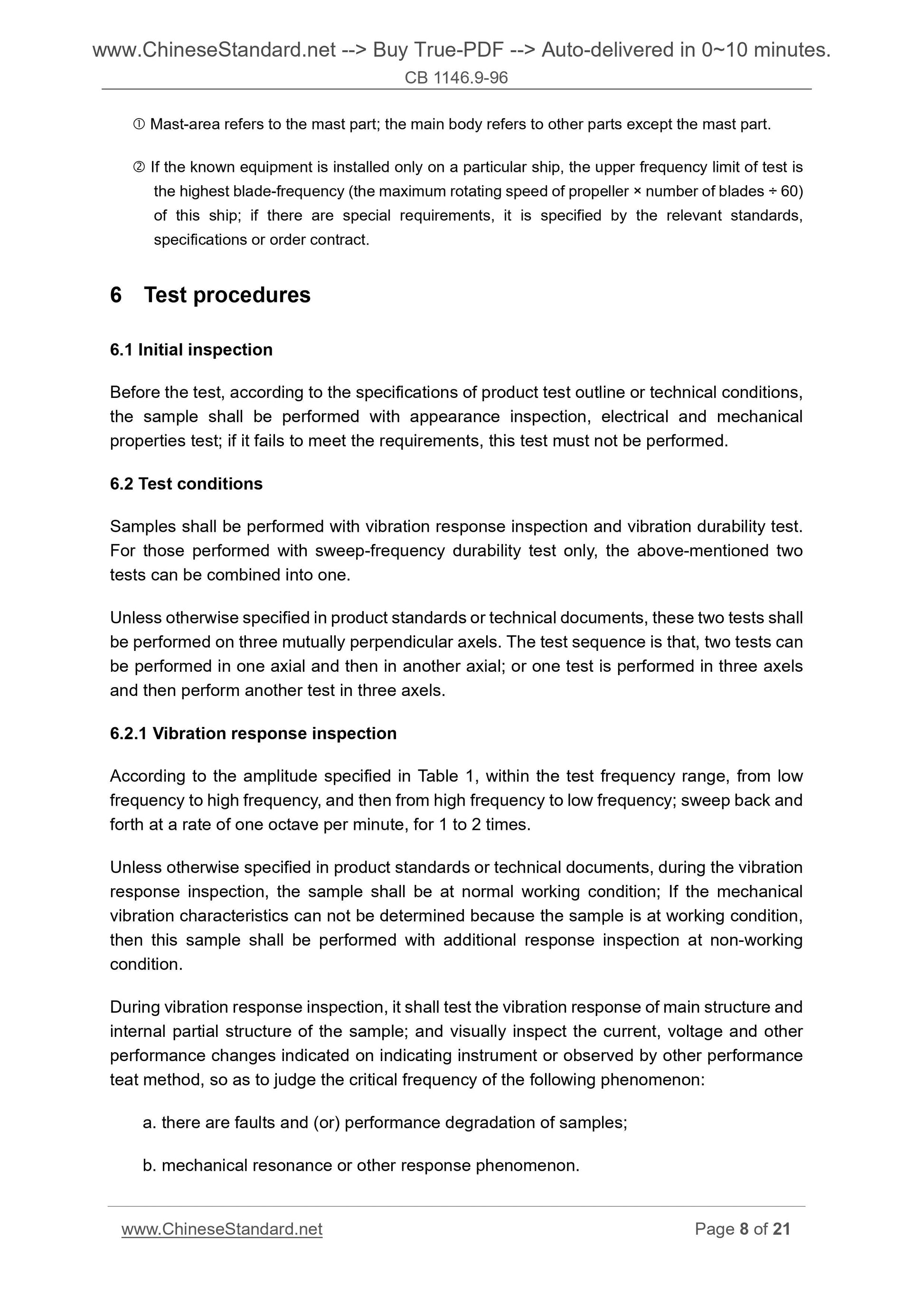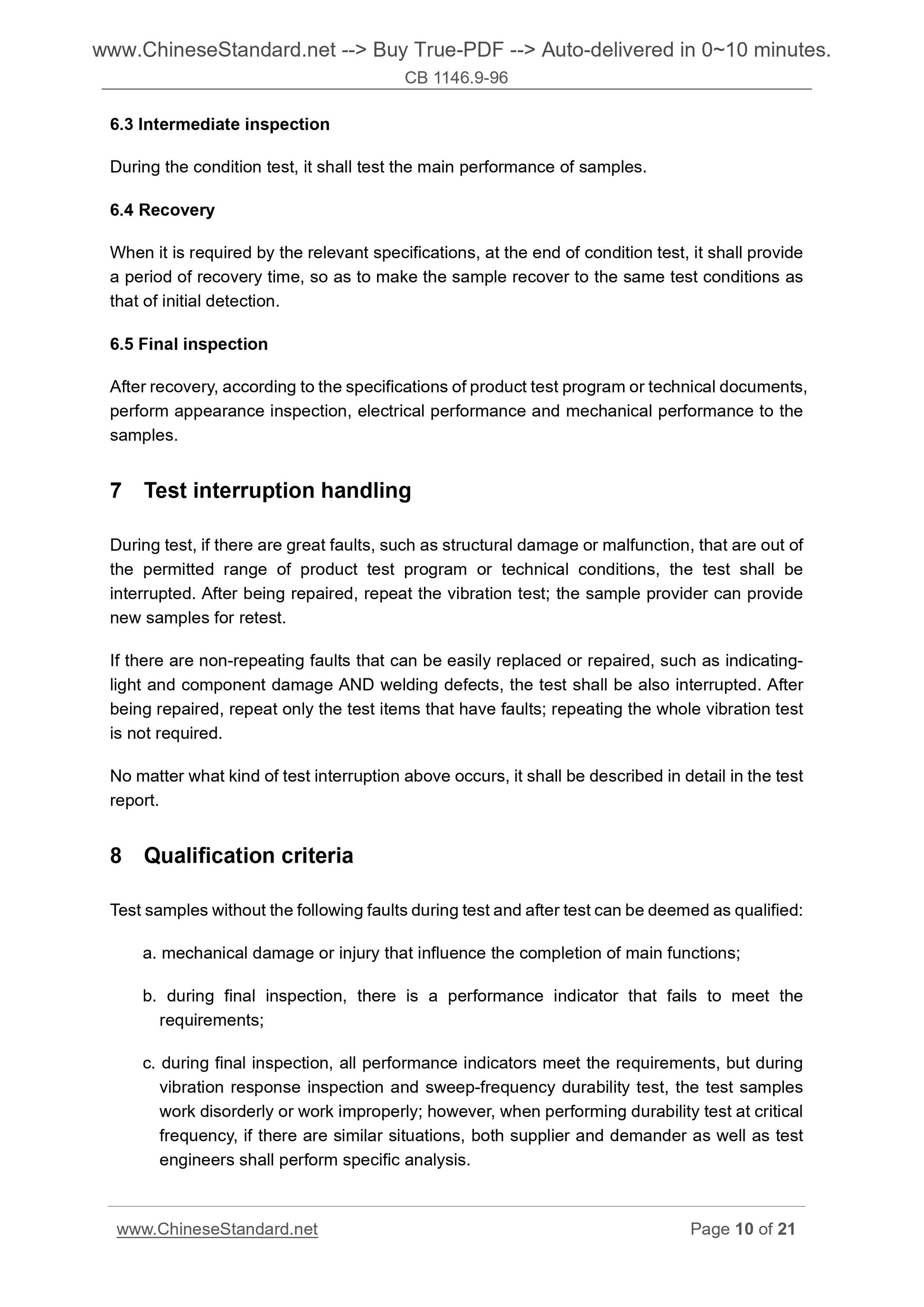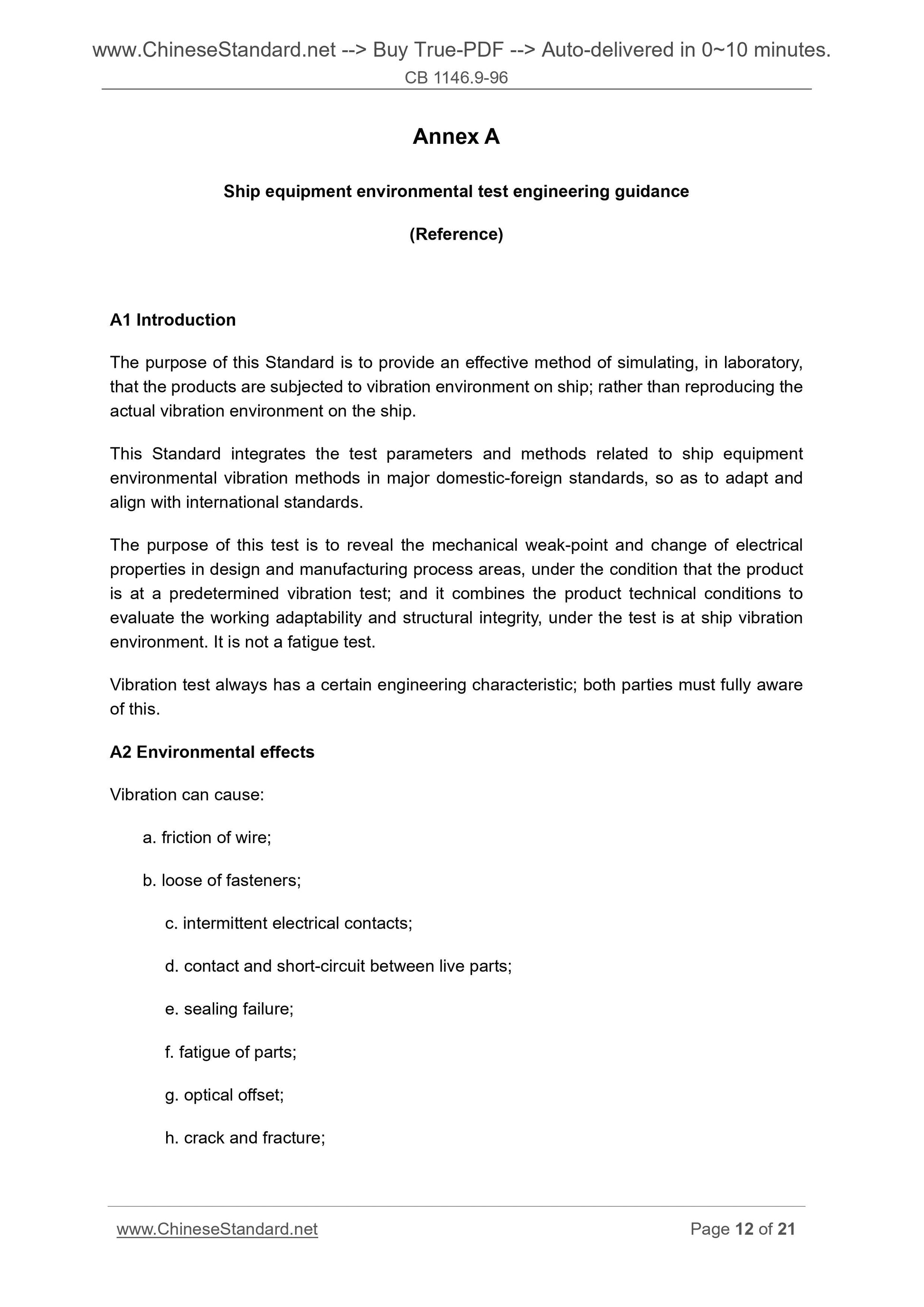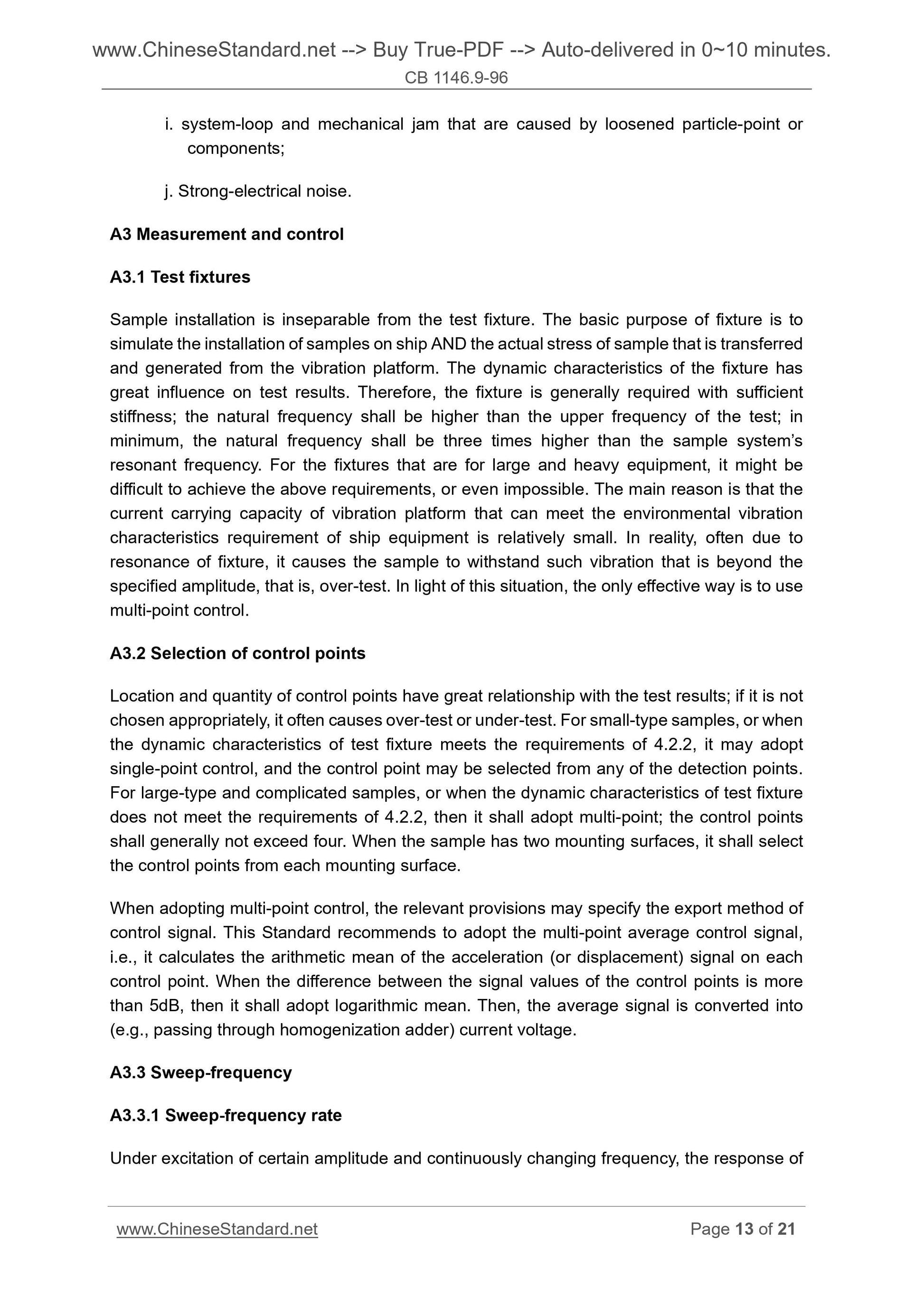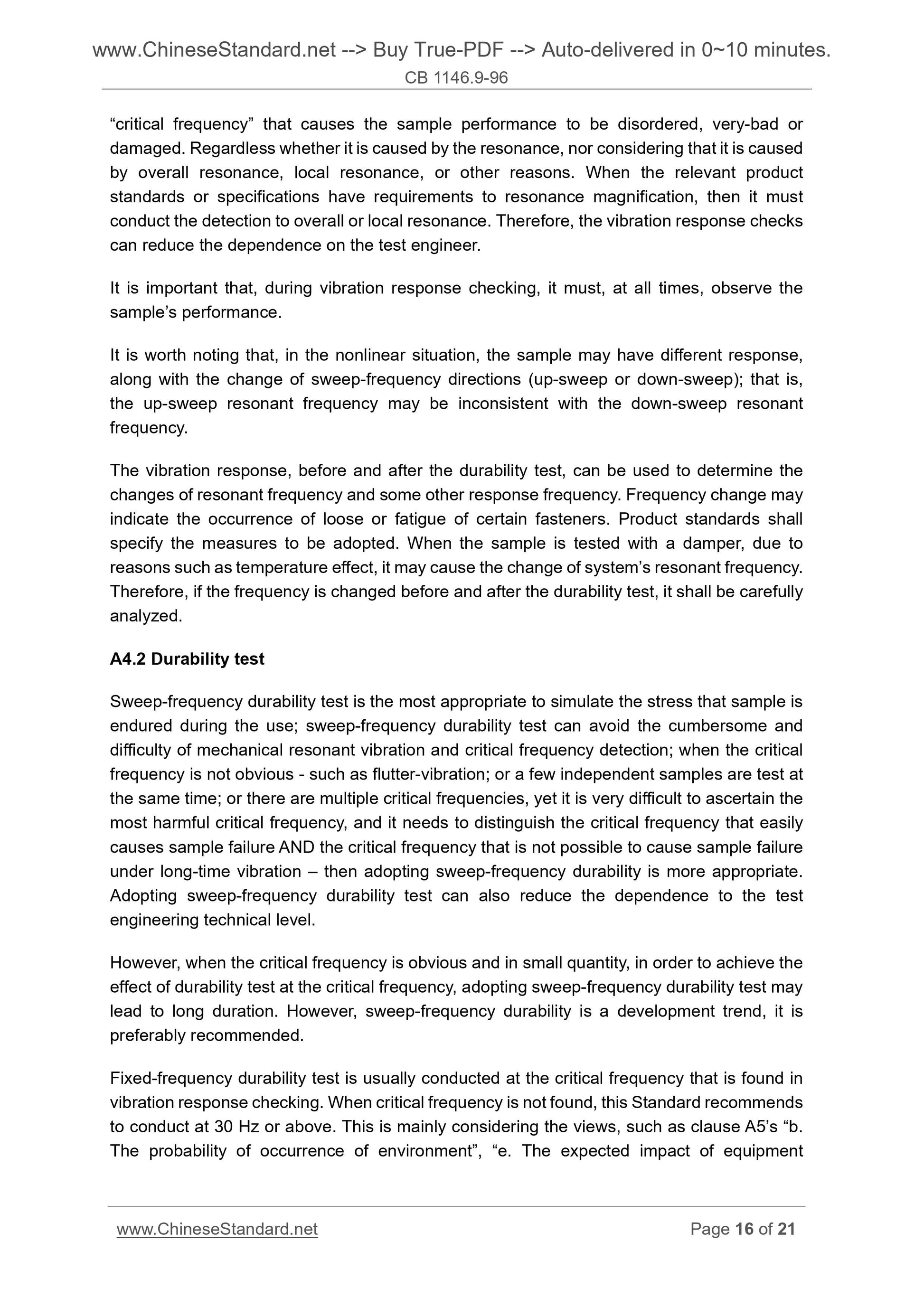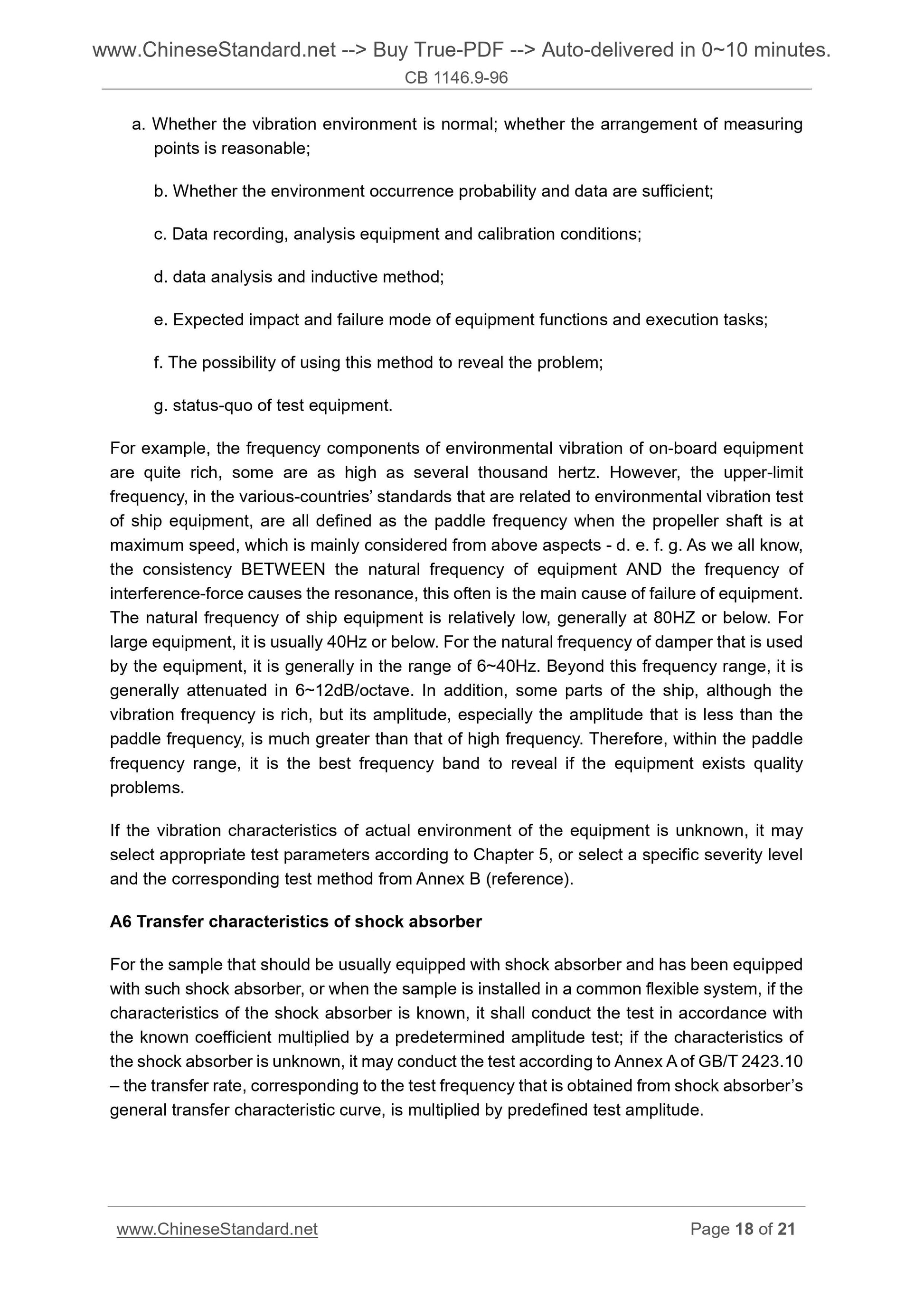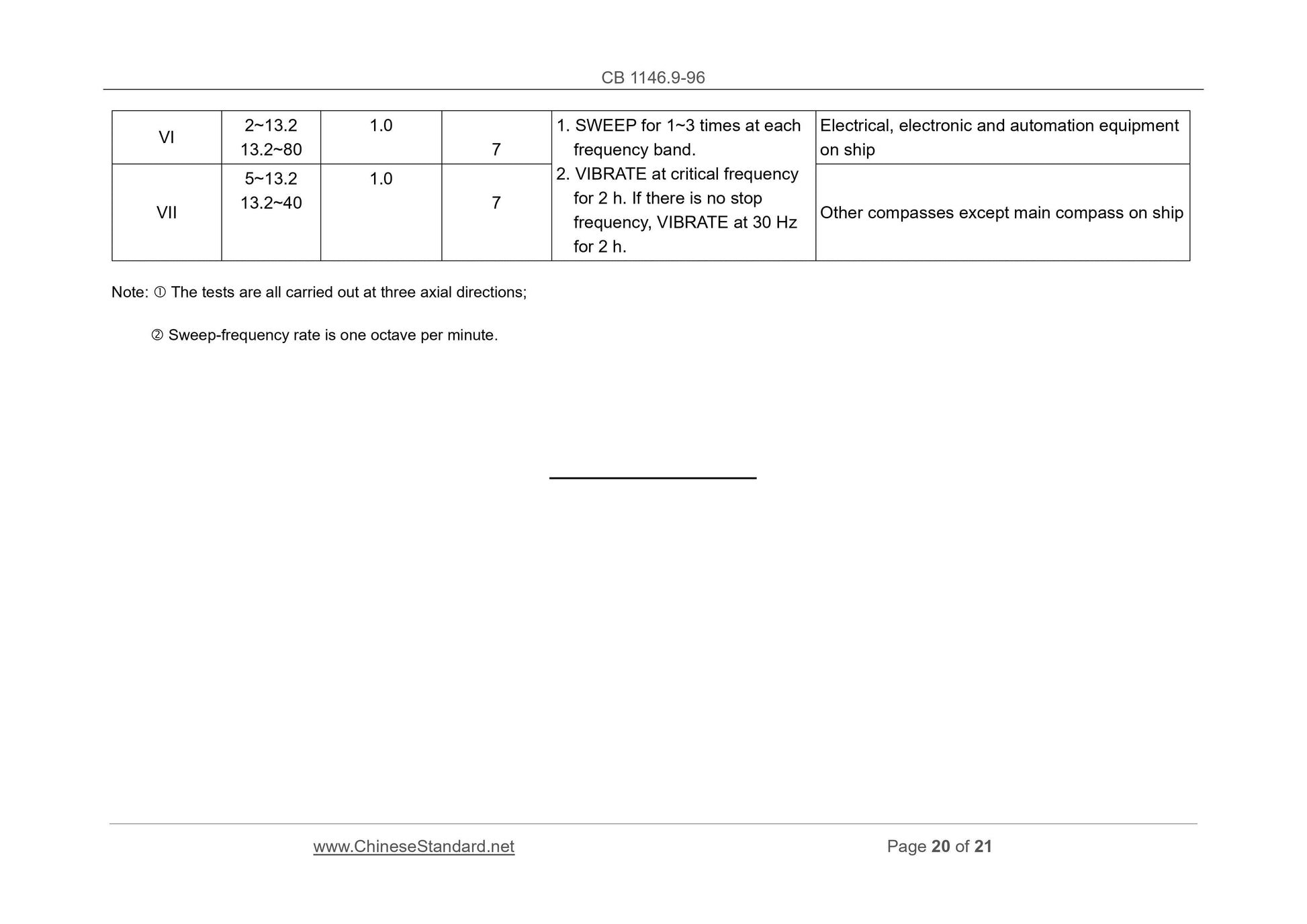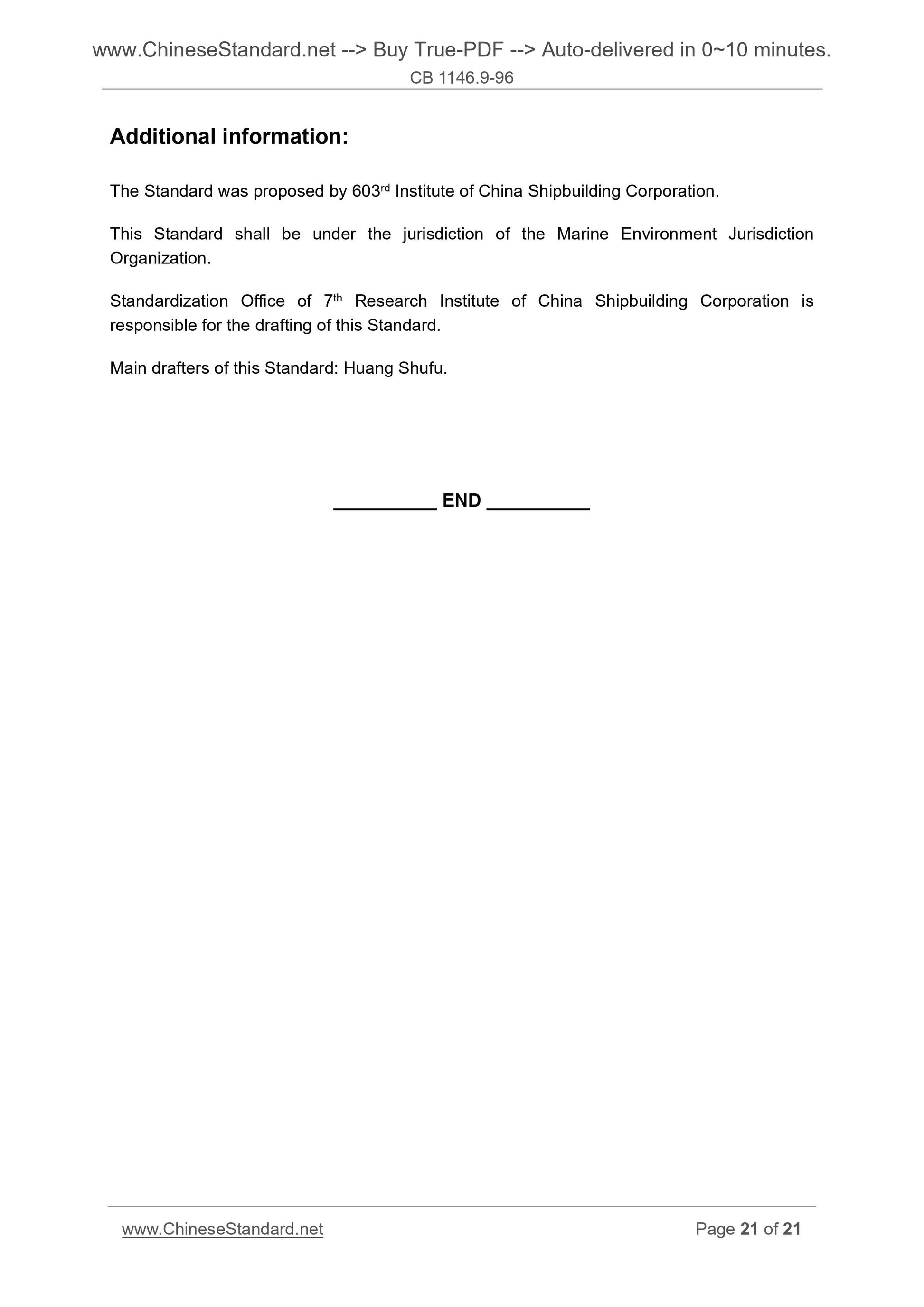1
/
of
12
www.ChineseStandard.us -- Field Test Asia Pte. Ltd.
CB 1146.9-1996 English PDF
CB 1146.9-1996 English PDF
Regular price
$140.00
Regular price
Sale price
$140.00
Unit price
/
per
Shipping calculated at checkout.
Couldn't load pickup availability
CB 1146.9-1996: Ship equipment environmental test and engineering guidance - Vibration (sinusoidal)
Delivery: 9 seconds. Download (and Email) true-PDF + Invoice.Get Quotation: Click CB 1146.9-1996 (Self-service in 1-minute)
Newer / historical versions: CB 1146.9-1996
Preview True-PDF
Scope
This Standard specifies the test conditions, severity, test procedures and acceptance criteriaof environmental vibration (sinusoidal) test of ship equipment; and it provides the engineering
guidance.
This Standard applies to the environmental test for evaluation of work adaptability and
structural integrity of ship equipment under specified vibration conditions.
Basic Data
| Standard ID | CB 1146.9-1996 (CB1146.9-1996) |
| Description (Translated English) | Ship equipment environmental test and engineering guidance - Vibration (sinusoidal) |
| Sector / Industry | Shipping Industry Standard |
| Classification of Chinese Standard | U04 |
| Word Count Estimation | 13,178 |
Share
